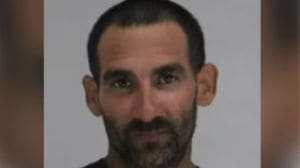Shooter in Gauri Lankesh murder case identified as bodybuilder by witness
Gauri Lankesh murder: Daulat Hipparagi identified Parshuram Ashok Waghmore, who was produced in court along with the 16 other accused, as his former associate who ‘was a bodybuilder’.
 Gauri Lankesh murder case: The SIT’s investigation has revealed that Waghmore allegedly received firearms training at different places in Karnataka in the run-up to Gauri Lankesh's murder. (file)
Gauri Lankesh murder case: The SIT’s investigation has revealed that Waghmore allegedly received firearms training at different places in Karnataka in the run-up to Gauri Lankesh's murder. (file)A witness has identified the alleged shooter in the Gauri Lankesh murder case in court and said the latter, Parshuram Ashok Waghmore, was known as a “bodybuilder”.
During its inquiry of the September 5, 2017, murder of the journalist outside her Bengaluru home, a special investigation team (SIT) of the Karnataka police had incidentally found clues to Waghmore’s identity on the basis of diary entries of a key accused that contained notes on an individual identified as a “builder” who was part of a right-wing extremist crime syndicate.
Daulat Hipparagi (32), of Sindagi in Karnataka’s Vijayapura district, identified Waghmore, who was produced for the trial along with the 16 other accused on Tuesday, as his former associate who “was a bodybuilder”. The witness also told the court that Waghmore, now 30, was earlier involved in hoisting a Pakistan flag at a tehsildar’s office to foment communal trouble.
Special public prosecutor S Balan told the court that Hipparagi had received threats against becoming a witness in the case and identifying Waghmore. When asked by the court about the threats, however, Hipparagi did not state the allegations that had been conveyed to the prosecutor through police.
Waghmore alias Kohli, who worked in his uncle’s utensils store in Sindagi, was arrested in June 2018 and identified by the SIT as the man who shot the 55-year-old journalist-activist. He had been on the police radar since the arrests of four men linked to the radical right-wing outfit Sanatan Sanstha and its affiliate, the Hindu Janajagruti Samiti (HJS). Waghmore was identified under the code name “builder” in a diary found in the possession of former HJS Pune convener Amol Kale (37), one of the four accused arrested on May 31, 2018.
Waghmore was detained by the SIT after he matched the height-and-weight profile provided by technical experts for the shooter of Lankesh through the analysis of CCTV footage captured outside her home. The shooter was recruited by the extremist group after scouting for radical-minded people among smaller Hindutva groups.
The SIT’s investigation has revealed that Waghmore allegedly received firearms training at different places in Karnataka in the run-up to the murder.
Along with people linked to the Sri Rama Sene, Waghmore was arrested earlier, in January 2012, for allegedly hoisting the Pakistan flag at the tahsildar’s office in Sindagi on January 1, 2012. Hindutva groups such as the Bajrang Dal, the Vishwa Hindu Parishad and the Sri Rama Sene then shut down the town in protest against the flag hoisting.
Police investigations had identified the others in the flag case as Rakesh Math, then 19, and Mallanagouda Patil, Rohit Navi, Sunil Agasar and Anil Solankar—all 18 at the time.
Lankesh was killed after four bullets were fired at her by a man wearing a helmet—now identified by the SIT as Waghmore—while opening the gate to her home after returning from work. The killer arrived on a motorcycle with an accomplice now identified as Ganesh Miskin alias Mithun (35).
A forensic analysis of the four empty cartridges and as many bullets fired to kill the journalist showed that the markings on the bullets and cartridges were the same as those found on bullets and cartridges recovered from the site of the killing of Kannada scholar M M Kalburgi (77) in the northern Karnataka town of Dharwad on August 30, 2015.
Findings from the comparison of ballistic evidence from the Lankesh and Kalburgi cases also revealed that the 7.65 mm countrymade gun used in the two murders were also used in the shooting of Leftist thinker Govind Pansare (81) in Kolhapur, Maharashtra, on February 16, 2015. The ballistic evidence also indicated that one of the two guns used in the Pansare murder was used to kill rationalist Narendra Dabholkar (69) in Pune on August 20, 2013.
The SIT arrested 17 people linked to Hindutva groups who allegedly created a syndicate to carry out killings and attacks, primarily in Karnataka and Maharashtra, between 2013 and 2018.
“The members of this organisation targeted people whom they identified to be inimical to their belief and ideology. The members strictly followed the guidelines and principles mentioned in Kshatra Dharma Sadhana, a book published by the Sanatan Sanstha,” the SIT said after filing a 9,235-page chargesheet in the case on November 23, 2018. The trial began in July 2022.








